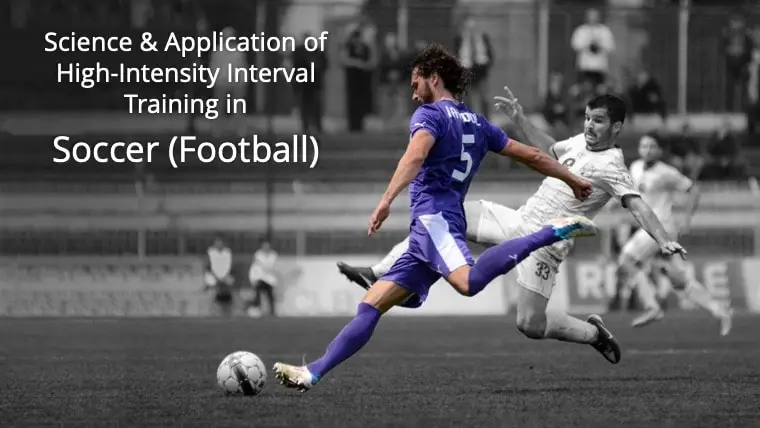How much HIIT training per week do you actually need for maximum results? This question has puzzled fitness enthusiasts and coaches for years.
Recent sports science research reveals surprising insights that challenge the “more is better” mentality in high-intensity interval training.
The answer might shock you: just 20-30 minutes per week at the right intensity can deliver breakthrough performance improvements.
Let’s dive deep into the science-backed approach to optimal HIIT programming.
The Science Behind HIIT Training Frequency
High intensity interval training has revolutionized fitness programming, but understanding the optimal dose-response relationship is crucial for maximizing the benefits of HIIT.
Research shows that strategic HIIT programming beats random high-volume approaches.
This means strategic HIIT programming can achieve significant cardiovascular adaptations with minimal time investment.
Should You Do HIIT Multiple Times Per Week?
Should you do HIIT every day? Absolutely not. The research is clear: quality trumps quantity in high-intensity interval training programming.
The optimal prescription involves:
- 2-3 sessions per week maximum
- 48-72 hours recovery between sessions
- Focus on intensity over volume
Many athletes make the mistake of doing too many HIIT workouts, leading to overtraining and diminished returns.
The 20-30 Minute Weekly Formula
Based on comprehensive research analysis, the optimal answer to “how much HIIT per week” is surprisingly specific: spend 20-30 minutes per week at intensities above 90% of maximum heart rate.
[Media Space 4: Visual breakdown of weekly HIIT time allocation]
This breaks down to:
- 2 sessions per week
- 10-15 minutes per session in target zone
- 8-10 minutes actual work time per session
The Veronique Billat Method: Personalizing Your HIIT Volume
Renowned exercise physiologist Veronique Billat developed a personalized approach to determining how much HIIT training per week works best for individuals. Her formula suggests that an effective session should accumulate 2.5 times your time to exhaustion at VO2max. Buchheit’s work with elite soccer players has demonstrated the practical application of these principles in professional sports settings.
- If your VO2max time to exhaustion = 5 minutes → Target 12.5 minutes in zone per session
- If your VO2max time to exhaustion = 4 minutes → Target 10 minutes in zone per session
- If your VO2max time to exhaustion = 7 minutes → Target 17-18 minutes in zone per session
Martin Buchheit’s Elite Athletic Applications
Martin Buchheit, the brains behind Metabolic Conditioning for Team Sports, has revolutionized how professional teams approach HIIT programming. His research validates the 20-30 minute weekly threshold while emphasizing individual adaptation patterns.
Working with elite soccer players, Buchheit’s data demonstrates that exceeding optimal HIIT volumes can lead to diminishing returns and increased injury risk. His work shows that many hiit workouts performed beyond the evidence-based threshold can actually impair performance rather than enhance it.
Different HIIT Training Formats and Their Effectiveness
Building on Buchheit’s research methodology, understanding how much HIIT training per week requires examining format effectiveness. The beauty of determining optimal HIIT volume lies in format flexibility.
[Media Space 6: Comparison chart of different HIIT formats]
Traditional Intervals
- Long intervals: 3-5 minute work periods
- Short intervals: 30 seconds to 2 minutes
- Efficiency: 60-70% of exercise time spent in target zone
Small-Sided Games
Sport-specific variations in soccer, basketball, or handball offer higher efficiency compared to traditional sprints. These formats provide better time-in-zone while developing technical skills simultaneously.
Repeated Sprint Training
Multiple short, maximal efforts with incomplete recovery between efforts. This format works exceptionally well for sport-specific movement patterns.
Sample Weekly HIIT Progression Program
Understanding how much HIIT training per week requires progressive programming. Here’s a research-backed approach:
[Media Space 7: Weekly progression timeline visualization]
Week 1-2: Foundation Phase
- Frequency: 2 sessions per week
- Total work time: 20 minutes
- Target zone time: 14-18 minutes
- Focus: Short intervals and technique mastery
Week 3-4: Development Phase
- Frequency: 2-3 sessions per week
- Format: Mix of short intervals and small-sided games
- Target zone time: 17-20 minutes
- Focus: Varied stimuli and sport specificity
Week 5+: Maintenance/Peak Phase
- Frequency: 2 sessions per week
- Integration: Repeated sprints
- Target zone time: 20-30 minutes
- Focus: Sport-specific applications
Monitoring Your HIIT Training Volume
While laboratory testing with gas analysis provides the gold standard for measuring time in VO2max zone, practical field applications rely on accessible monitoring methods.
[Media Space 8: Heart rate monitor display showing target zones]
Key Monitoring Guidelines
- Target zone: 90%+ of maximum heart rate
- Efficiency factor: Only 60-70% of exercise time reaches target intensity
- Backup method: RPE 6-8 out of 10
Individual Factors Affecting HIIT Frequency
The 20-30 minute weekly guideline serves as a starting point, but individual factors significantly influence how much HIIT training per week works optimally for each person.
Factors Affecting HIIT Dose Requirements
- Training age and fitness level
- Sport-specific demands
- Recovery capacity
- Age and physiological profile
- Concurrent training loads
Signs You Need Dose Adjustment
- Plateau in performance markers
- Excessive fatigue or poor recovery
- Loss of motivation or training quality
- Inability to maintain target intensities
Key Takeaways for Optimal HIIT Programming
The research provides clear guidelines for how much HIIT training per week delivers maximum results:
- Minimum effective dose: 20-30 minutes per week above 90% max heart rate
- Session frequency: 2-3 times per week optimal
- Rapid adaptations: Significant improvements within 4-8 sessions
- Format flexibility: Multiple methods can achieve target dose
- Individual variation: Adjust based on personal factors and goals
Conclusion: Quality Over Quantity in HIIT Training
The question “how much HIIT training per week” has a surprisingly simple answer: less than you think. Effective HIIT programming prioritizes intensity and precision over volume.
By targeting 20-30 minutes per week in the VO2max zone through varied, engaging formats, athletes and fitness enthusiasts can maximize cardiovascular adaptations while minimizing time commitment and overtraining risk.
Remember, these guidelines represent starting points for program design. Monitor your response, adjust based on individual factors, and focus on consistency over perfection. The most effective HIIT program is one you can sustain long-term while achieving your specific performance goals.
Ready to optimize your HIIT training? Start with the minimum effective dose, track your time in zone, and build progressively based on your individual response and sport-specific needs.
Conclusion
The landscape of soccer periodization has evolved considerably, driven by groundbreaking research and technological advances. As coaches and players embrace these innovations, the importance of ongoing research and adaptation in training methodologies becomes increasingly clear.
Optimize your team’s performance and stay ahead of the game by implementing these cutting-edge periodization strategies in your training programs.







